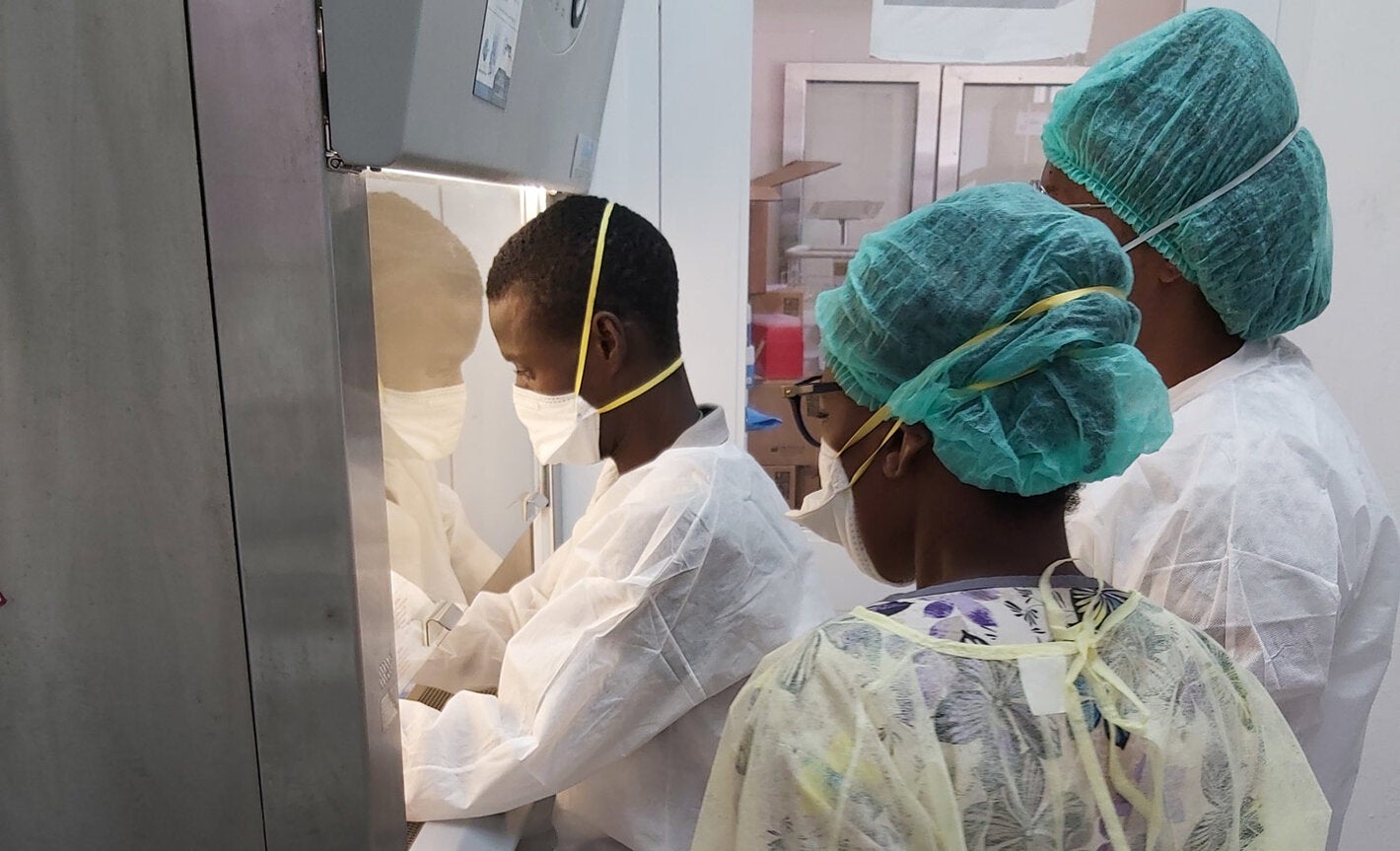
PAHO Director says spikes seen in several countries and surveillance critical to identify local outbreaks and prevent further spread of the disease.
Washington, D.C., October 20, 2021 (PAHO) -- While overall vaccination coverage has reached 41% in Latin America and the Caribbean, surveillance will remain key to identifying new risks and responding to local infection hotspots, the Director of the Pan American Health Organization (PAHO), Carissa F. Etienne said.
The PAHO Director warned of increased infection rates in the Caribbean, parts of Canada, Mexico, Bolivia, and Venezuela, and underscored the need to track and manage infections closely as vaccine rollout continues.
“Surveillance has always been the eyes and ears to guide our COVID response,” Dr Etienne said during a press briefing, “as we navigated our pandemic peaks and as we continue to track emerging variants.”
“Health authorities should have a clear picture of what is happening at the local level and quickly communicate both the risks and the public health measures needed to reduce transmission,” she said.
For municipalities to detect risks as they emerge, the Director added, institutions such as laboratories, public health schools and universities must also be empowered to diagnose new infections locally.
She also called for enhancing surveillance tools and networks to monitor diseases more efficiently and sustainably, adding that PAHO is working with the US Centers for Disease Control and Prevention (CDC) to implement a new PCR test protocol to simultaneously detect COVID-19 and influenza from the same sample.
Building on the region’s longstanding surveillance networks, there are now 45 National Public Health Laboratories that run PCR tests for countries across the Americas. PAHO supports this network by standardizing laboratory protocols, conducting trainings, and has also donated more than 21 million COVID PCR tests and nearly 18 million rapid diagnostic tests.
This “enables us to keep a close eye on this virus and on the emergence and spread of COVID-19 variants,” the Director said. “We must keep investing in and expanding this regional network.”
Turning to the COVID-19 situation in the region, Dr. Etienne said that in the past week the Americas reported nearly 817,000 new infections and over 18,000 deaths.
While cases are dropping in North America, hospitalizations have increased in Canada’s eastern provinces, and there was an increase in deaths in Mexico.
COVID infections and deaths have gone down in most countries of Central America and South America, with the exception of Bolivia and Venezuela.
Dr. Etienne warned that the situation in the Caribbean remains severe. The Dominican Republic and Barbados reported a 40% jump in new cases during the past week, while Puerto Rico, Trinidad and Tobago, and Martinique also saw an increase in new infections. Cases remain high in Saint Martin, Saint Kitts and Nevis, Anguilla, and the Cayman Islands.
The Director highlighted the upcoming 30-year anniversary of the last case of polio in the Americas as a lesson in fighting disease through sustained and concerted action. “This extraordinary accomplishment was made possible by mass vaccination efforts and robust epidemiologic surveillance,” Dr. Etienne said.
World Polio Day this Sunday, she added, is a reminder of what can be achieved in the region when countries work together to keep health threats in check, protect the most vulnerable, and ensure access to vaccines for all.



